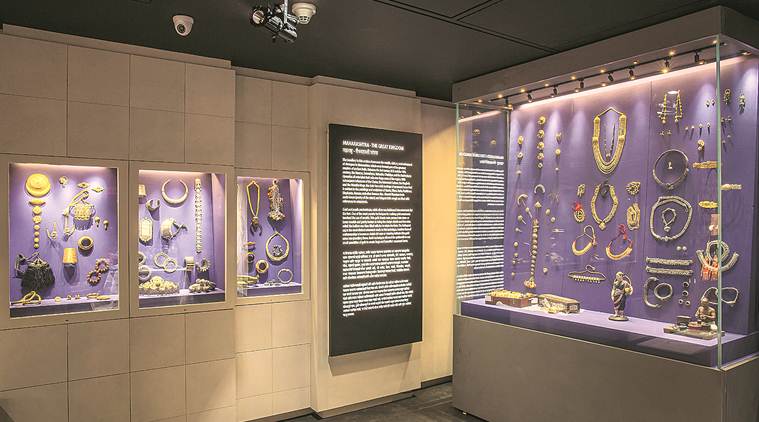 With this venture, CSMVS’ public jewellery gallery will be one of its kind in the country. The National Museum in Delhi had a jewellery gallery, which was operational from 2014 to 2019. Jaipur has two jewellery galleries, both private.
With this venture, CSMVS’ public jewellery gallery will be one of its kind in the country. The National Museum in Delhi had a jewellery gallery, which was operational from 2014 to 2019. Jaipur has two jewellery galleries, both private.
All that glitters is definitely gold at the two new galleries of Chhatrapati Shivaji Maharaj Vastu Sangrahalaya (CSMVS) in Mumbai. On February 23, the museum will inaugurate its permanent jewellery and money galleries, with many objects from the inhouse collection set to be displayed for the first time. Both galleries are supported by the Hemendra Kothari Foundation.
With this venture, CSMVS’ public jewellery gallery will be one of its kind in the country. The National Museum in Delhi had a jewellery gallery, which was operational from 2014 to 2019. Jaipur has two jewellery galleries, both private.
Sabyasachi Mukherjee, CSMVS director general, said: “People are attracted to royal jewellery collections… When we looked at our collection, we realised that the jewellery of the common person is as important as royal collections.”
Royal jewellery usually used gold and precious stones, so it didn’t always show great experimentation with design or materials, said Manisha Nene of CSMVS who has co-curated this gallery with art historian Usha R Balakrishnan. The gallery has jewellery made of not just precious metals, but also fish scales, beetle wings and elephant hair.
With more than 400 objects on display, the highlights include replicas of prized Golconda diamonds gifted by the Indian branch of the GIA (Gemological Institute of America), a chank or head ornament made of gold and precious stones discovered during excavations for the Port Trust work at Elephanta Island, and a perfume bottle made of jade belonging to Jahangir from 1626 AD.
One section is dedicated entirely to Maharashtrian jewellery, which boasts of different maals (necklaces) made of beads resembling watermelon seeds, wheat grains and ber fruit.
Balakrishnan, who has written several books on historic jewellery, said that the curation reflects an unbroken tradition of art and craft in India, right from the time of the Harappan civilization. “We are looking at a 5,000-year-old tradition to present an unbroken continuity of love for adornment and craftsmanship skills that have passed from guru to shishya,” she said.
For instance, a terracotta relief from West Bengal dated around the second century BC shows a yakshi wearing elaborate hairpins. Similar designs were still in use in 20th century India. An array of keshalankars (hair ornaments), many of which were purchased by the museum from THE late hair stylist, Veena Shroff, add to this thematic curation.
The jewellery gallery leads into the money gallery, curated by Vandana Prapanna of CSMVS. The museum’s previous coin gallery was dismantled for the landmark exhibition ‘India and the World: A History in Nine Stories’, in 2017. Among the 850 pieces, there are “punch-marked” coins, irregular metal strips from 6th century BC that were punched with symbols belonging to various rulers; and, larins, coins in the shape of clips, which people could attach to their robes, from the Adil Shahi dynasty.
Prapanna said that several gold coins are on display for the first time, including some from the Kushan and Gupta empires.